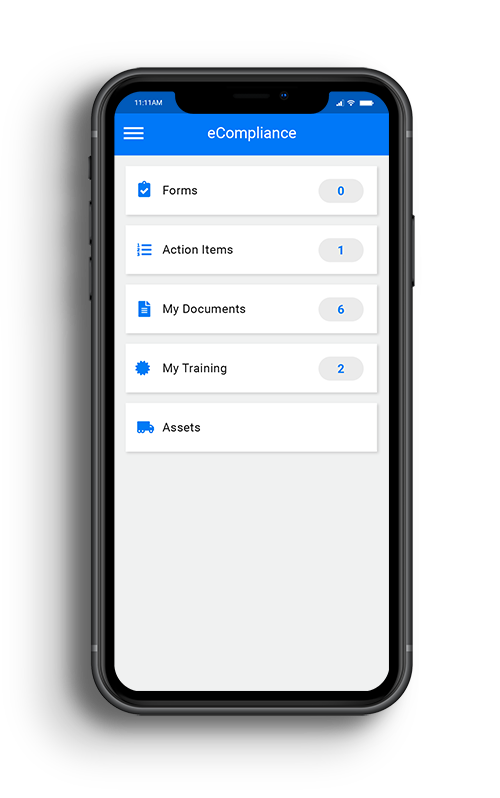
Share this Post
PUBLISHED
April 27, 2021
READ TIME
3 Minutes
WRITTEN BY
![]() Dina Adlouni
Dina Adlouni
Dina is the resident Content Writer at EcoOnline North America . When she’s not writing about health and safety, you’ll find her enjoying a cup of tea while watching her favorite sitcom.
In our newest whitepaper, How to Convert Safety Data to Actionable Insights, we outline the five steps needed to convert data to actionable insights, to elevate your safety program and transform your business. Here’s your sneak peek:
Organizations only use 32% of their data, leaving 68% unused1. This is a fundamental problem resulting in less insight and transparency needed to elevate safety programs to the next level to drive down incident and fatality numbers.
Without the ability to provide the timely collection and access to the right data which aligns with an organization’s safety goals and vision, Environment Health and Safety (EHS) professionals cannot manage, track, or analyze trends that expose gaps in their safety programs. This makes it more difficult to create a proactive strategy and drive safer outcomes to mitigate risks on-site.
There are three common challenges that lessen an organization’s ability to leverage safety data. They are:
1. Relying on paper-based systems to collect and manage data
According to market research conducted in 20202, surveying 801 businesses across North America, 25% of safety professionals have said that managing paper-based forms are within their top business challenges. This makes it impossible to gain the real-time insights necessary to mitigate risks on-site and increases the potential for human error.
Even worse, it costs businesses thousands of dollars every year. A Constructor Magazine article, Dealing With Data in the Construction Industry 3 published in February of 2020 details that it is the lack of centralized storage and structured management of the data that leads to unused data. Workers that have ready access to real-time data gain 4.5 hours back in their work week, that’s over 230 hours a year per person, which equates to over $4,500 per employee. Examples of how this can add up for any business:
- 100 employees = $450,000/year
- 500 employees = $2,500,000/year
By relying on paper to collect and manage information, finding the right data becomes arduous and time consuming, making leveraging the information EHS professionals need when they need it, extremely difficult, if not impossible at times.
2. Reporting siloes make data inaccessible to all key stakeholders
Many organizations face reporting or data siloes, where the information is trapped and not clearly visible or readily accessible to the required team members. Outlined in our whitepaper, A Market Guide to Global EHS Software 2021, “accessing data is crucial…to truly transform your organization a wider view of incorporating [data from] other critical areas of your business will help to make informed decisions and take positive action.”
To make the shift from a reactive to a proactive safety program, all team members from boardroom executives to front-line workers must have easy access to the data that impacts their role. By closing the feedback loop and ensuring communication is streamlined, safety professionals can make quicker, data-driven decisions reflecting their overall safety goals and vision.
3. The inability to track trends and patterns
Without access to the right data in full, safety professionals are unable to effectively track trends and patterns that would result in a more efficient and proactive safety approach. A lack of 360-degree insight into the required data points, such as leading and lagging indicators, compliance and training efficacy, etc., makes it more difficult to take value from the data being collecting.
Without the ability for EHS professionals to analyze their safety program to expose gaps and weaknesses and explore correlations between different data sets, the ability to drive safer outcomes becomes greatly diminished. As a result, the desired outcome of reducing incidents and injuries that protect people and businesses becomes more challenging and less likely.
Resolving These Core Challenges
Want to learn more about how to resolve these core challenges and the 5 steps needed to leverage data to create a safer, healthier, and stronger safety program? Check out our whitepaper, How to Convert Safety Data to Actionable Insights, to transform your safety program today!
Resources:
1 Seagate Technology plc, ‘Rethink Data’ Report Reveals That 68% of Data Available to Businesses Goes Unleveraged, July 2020
2 2020 Research UK
3 Tom Rice, Constructor Magazine, Dealing With Data in the Construction Industry, Feb. 2020
Speak to an EcoOnline Safety Expert Today
Unleash the Potential Within Your Safety Data Now

